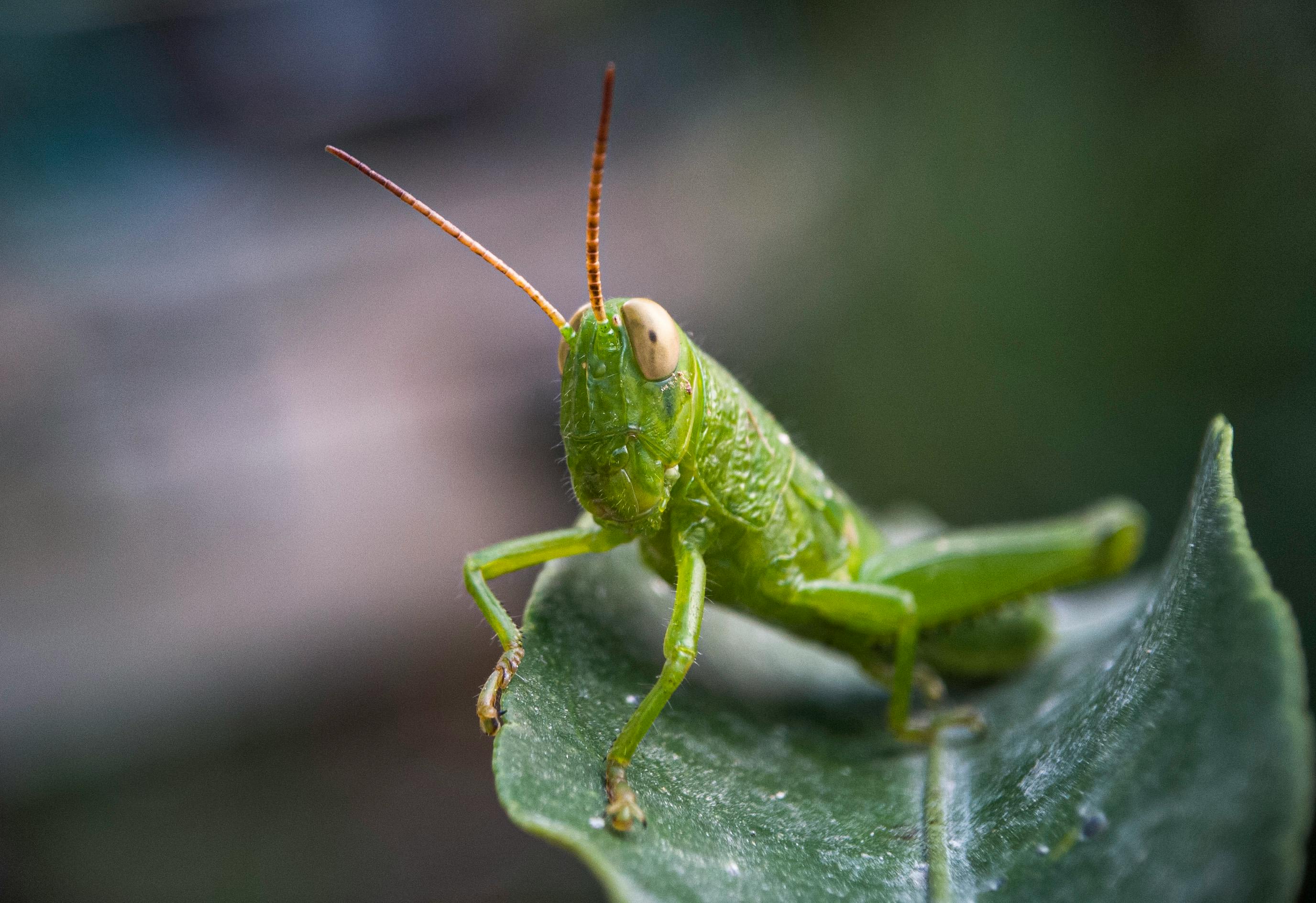Have you ever stumbled upon those hopping insects in your garden? Grasshoppers are more than just uninvited guests. They’re a sign of a healthy ecosystem and play an important role in nature. Whether you’re an enthusiast or simply curious about these tiny acrobats, join us in exploring their fascinating world!
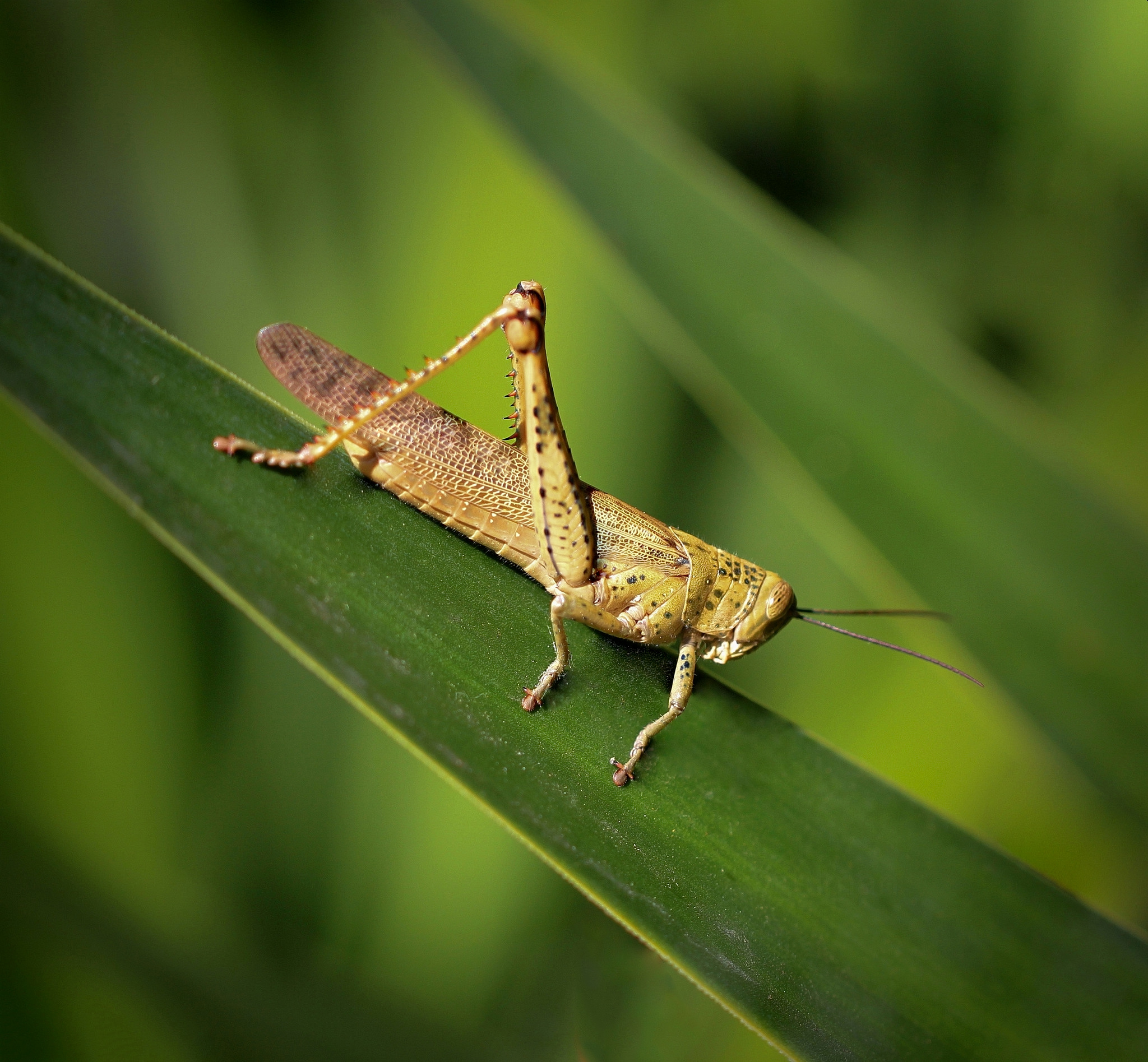
1. Hedge Grasshopper
- Length: 3.5 inches
- Distinction: Creamy-brown to greyish green
- Location: Australia
Widely known as a giant grasshopper or giant valanga, this species is the largest grasshopper in Australia. They spend their mornings bathing in the sun and feeding all night. They resemble stems and leaves so they always remain hidden behind branches. They eat oriental shrubs and palm trees. Although they lead a rather lonely life, they sometimes form small groups but they do not cause too much damage to be considered as pests.
Hedge grasshoppers are good jumpers and with the help of the spines on their hind legs, they can defend against other predators as well. They favor moist climates. During spring and autumn, they can be found in grasslands and forests. They can even be found in suburban gardens given the right circumstances.
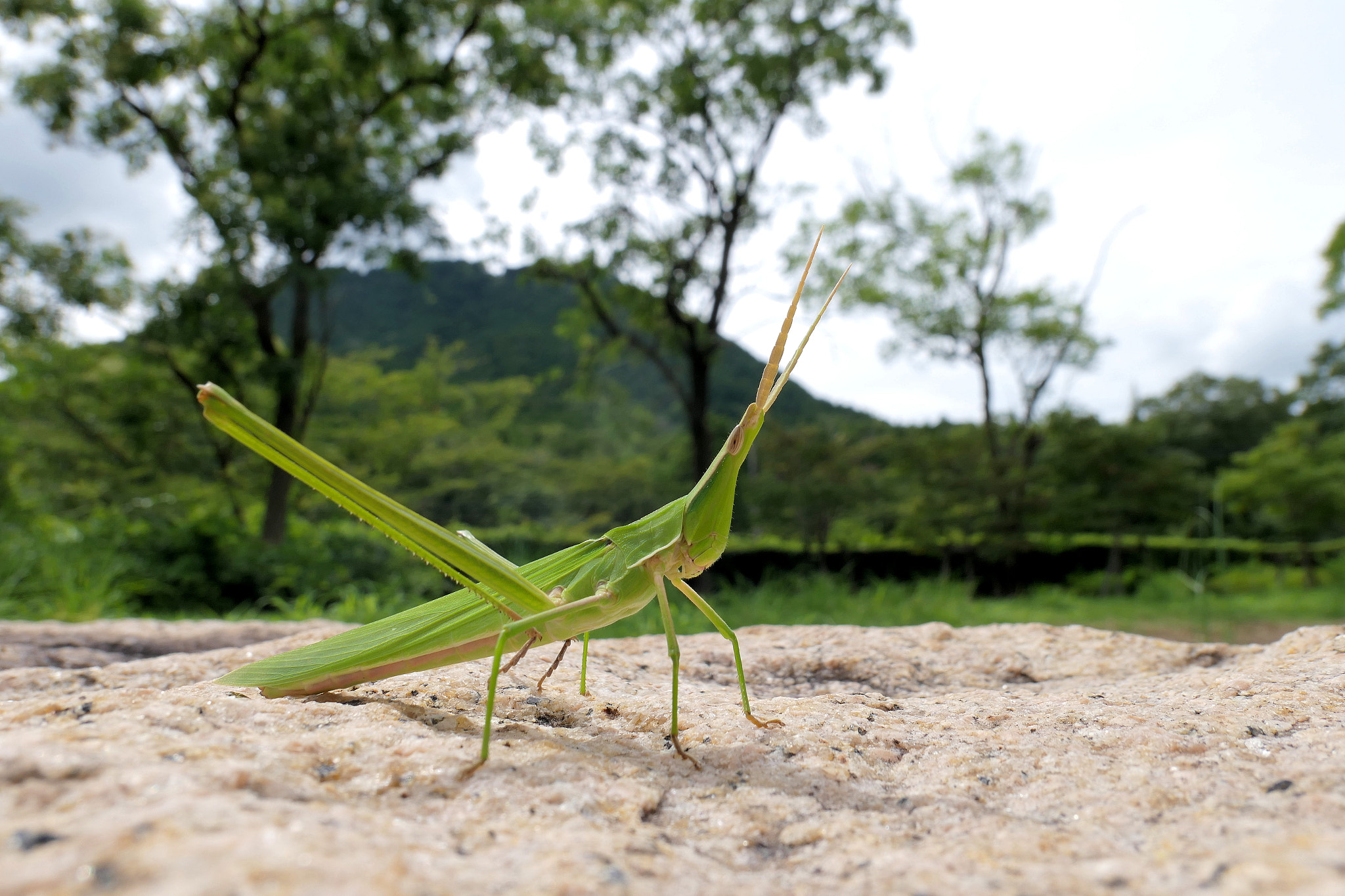
2. Chinese Grasshopper
- Length: 3 inches
- Distinction: Brown or green with long legs
- Location: China, Japan, Indonesia
Another species of large grasshopper is the acrida cinerea, more popularly known as the Chinese grasshopper. They have unique body structures with their long legs allowing them to jump great distances. They even make clapping sounds with their hindwings when they fly. They eat a lot of crops such as cotton, rice, and sugar cane so their typically seen as pests.
Did you know that they’re eaten across China as nutritional poultry food? Based on a study published on Science Direct, the crude protein found in a meal of these grasshoppers is comparable with that of a fish meal. Given the wide population of this large grasshopper, it means they’re a cheaper source of nutrients!
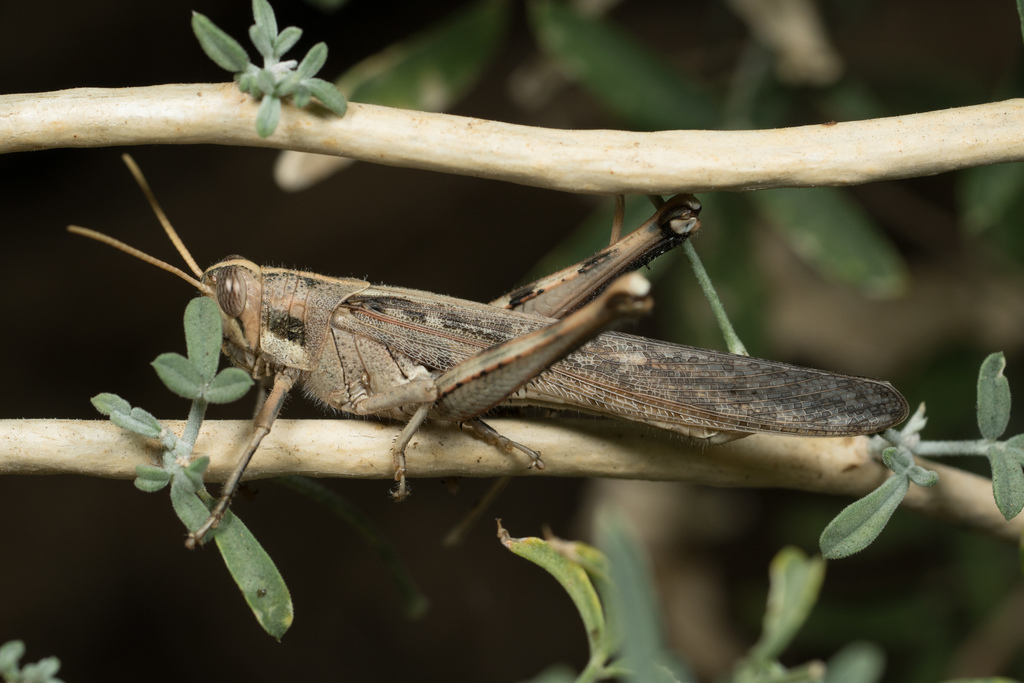
3. Gray Bird Grasshopper
- Length: 2.75 inches
- Distinction: Gray, black, white pattern, and yellow antennae
- Location: Northern South America, Southwestern North, and Central America.
This large species of short-horned grasshopper is also called vagrant grasshopper. They are considered mixed feeders and will feed on plants such as cotton, banana, citrus, and more. They’re destructive pests, invasive, and a threat to vegetation – especially endangered plant species.
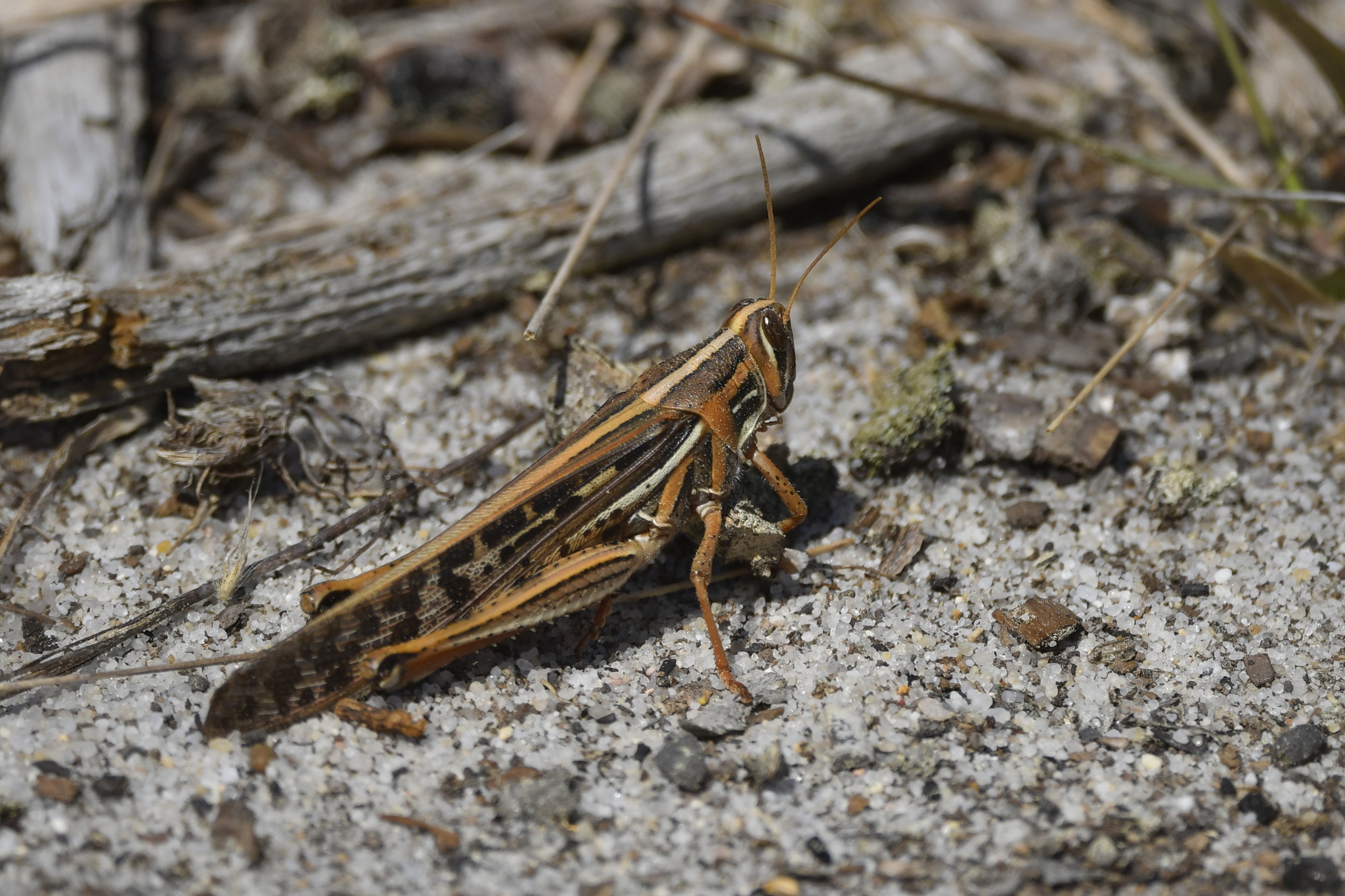
4. American Grasshopper
- Length: 2.2 inches
- Distinction: Dark brown, white, and tan pattern with black and white spines on rear legs
- Location: Central and North America
The American bird grasshopper or simply American grasshopper is frequently referred to as a locust because of their occasional local outbreaks. As a matter of fact, they are related to the desert locust, feed in swarms, and damage cultivated plants.
Southern species are significantly darker while immature ones can be yellow, green, or red with black spots. The adults of this large grasshopper species are usually seen first during spring to summer.

5. Two-Striped Grasshopper
- Length: 2.1 inches
- Distinction: Yellowish green with two yellow stripes on the body, red lower hind legs
- Location: North America and Canada
The two-striped or oftentimes referred to as yellow-striped grasshopper eats a wide array of crops but is essentially fond of lentils. They cause too much damage to vegetation and are regarded as pests. They’re diurnal and spend their time feeding and sunning themselves then migrate, and before the sun sets they begin climbing plants and then rest.
Here’s an interesting fact: not only do they eat crops but they feed on other small insects too. They can even turn cannibalistic if there’s very little to no food.
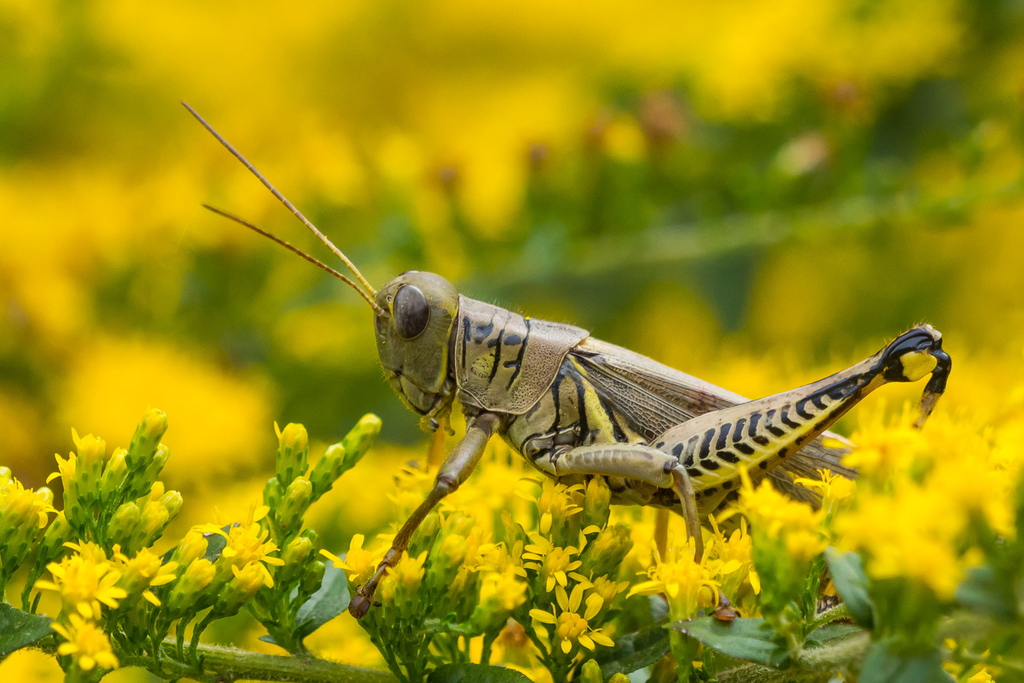
6. Differential Grasshopper
- Length: 2 inches
- Distinction: Olive green with black stripes and chevron markings on hindlegs
- Location: Central America, Canada, Mexico
Immature differential grasshoppers are bright green but they get darker as they get older. Plus, they mature faster than other large grasshoppers. They’re strong fliers capable of flying over 100 miles 1400 feet above ground. Their main diet consists of grasses, forbs, fruit trees, and lush vegetation. They’re notorious pests that damage farmlands by feeding in swarms.
These largest grasshopper species are truly remarkable! Although, it’s important to keep an eye on your backyard. While it wouldn’t hurt to have one of them visiting (or maybe even two!), a group of them might become overwhelming. So, stay vigilant and enjoy their occasional presence in moderation!
Frequently Asked Questions (FAQ)
Is there a carnivorous grasshopper?
As Andrei Ionescu from Earth.com wrote, a team of paleobiologists from the University of Leicester led a new study about the grasshoppers’ diet. Their research has shown that not all grasshoppers are herbivores, many species may even be carnivorous.
With the help of modern technology, they used three-dimensional imaging to determine the shape of museum grasshopper’s mandibles and compared them with mammal’s teeth.
Christopher Stockey – the lead author of the study – explained, “Mandibles from carnivorous grasshoppers that eat soft flesh have steeper slopes and sharper cliff edges, while those that eat tough plant material, such as grass, have mandibles with complex undulating ‘landscapes.’”If you want to learn more, their study is published in Methods in Ecology and Evolution.
Are grasshoppers and locusts the same?
All locusts are grasshoppers but not the other way around. Given the right environmental conditions, a grasshopper can develop gregarious characteristics and transform into a locust known as the polyphenism phase.
They will undergo not only physiological changes but behavioral changes as well. They’ll change color and body shape. Even their wing structure changes, becoming longer and stronger. Then they’ll reproduce at a fast rate, form swarms, and migrate.
Is it ok to touch grasshoppers?
As their defense mechanism, grasshoppers secrete digestive fluid that’s not only acidic but has a foul smell to fend off predators. Although it is not harmful to humans, pick it up at your own risk.
What color is grasshopper blood?
You may be surprised to know that grasshoppers have green blood. They have an open circulatory system where hemolymph or what they call “insect blood” is pumped, carrying nutrients throughout their body.
Since they don’t have blood vessels, this watery fluid – the hemolymph, which is greenish – oozes through the hollow part of the insides of their external skeleton.
What is the rarest grasshopper in the world?
The pink grasshopper is the rarest in the world. According to the Miami Herald, McClatchy News reported that erythrism is a rare genetic mutation that causes the body to produce too much red pigment and not much darker ones. This results in the grasshopper’s unusual pink or reddish coloration. To get a closer look, check out these photos of a rare pink grasshopper that the BBC Wales News shared on Instagram. The images were captured by 65-year-old Gary Phillips who stumbled upon the creature in his garden while pruning his dahlias.

